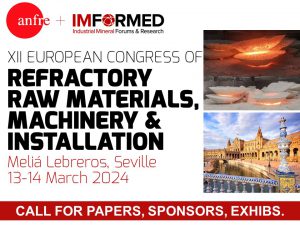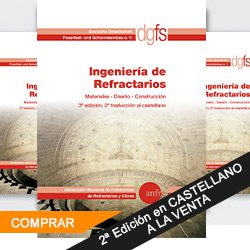 The tiered approach to free allowance allocation for the EU ETS carbon leakage list is a concept which undermines the aim of the EU ETS and contradicts the October 2014 European Council Conclusions. It would not ensure the delivery of cost-effective greenhouse gas emission reductions, but on the contrary would have a deleterious impact on the wider European economy and would result in an increase in global emissions. A tiered approach would result in an inadequate level of carbon leakage protection for all ceramic sectors. Among others, we urge that the following key points are taken into account:
The tiered approach to free allowance allocation for the EU ETS carbon leakage list is a concept which undermines the aim of the EU ETS and contradicts the October 2014 European Council Conclusions. It would not ensure the delivery of cost-effective greenhouse gas emission reductions, but on the contrary would have a deleterious impact on the wider European economy and would result in an increase in global emissions. A tiered approach would result in an inadequate level of carbon leakage protection for all ceramic sectors. Among others, we urge that the following key points are taken into account:
1) Carbon leakage risk – difficult to quantify accurately
2) Un-level playing field on EU internal and global markets
3) Evolution of trade and emission intensity
4) Unfair treatment for those sectors who have invested in carbon-efficiency
5) Increased compliance costs
1) Carbon leakage risk – difficult to quantify accurately
Carbon leakage (i.e. the loss of production, jobs and investment to third countries with no or less stringent carbon constraints) occurs if companies are not able to pass-through the carbon costs onto consumers without losing market share. It is extremely difficult to quantify such risks at sectoral or sub-sectoral levels, since it is affected by the strategies adopted by individual businesses and across a long- term business cycle. Due to the specific cost structure (where energy and climate costs account for a large share of total production costs) coupled with the wider impacts on industrial value chains across the European economy, all energy-intensive industries must receive full protection to guard against leakage risks.
2) Un-level playing field on EU internal and global markets
The introduction of a tiered list would lead to inadequate carbon leakage protection for most industrial sectors and a further major distortion of the playing field both globally (against non-EU ceramic producers) and in the internal EU market. The reduced mitigation and increased carbon costs associated with tiering will increase the competiveness of non-EU producers (at the expense of EU producers) allowing non-EU products to penetrate the EU market to a greater degree than at present. Potential competitive market distortions would occur between industrial sectors producing substitutable products, for example: clay vs. cement-based concrete, steel and glass construction products and ceramic wall/floor tiles vs. carpet, vinyl, laminate etc). Moreover, given the durability of ceramics, such a shift would neither facilitate carbon emission reductions, nor improve the ecological footprint of the materials used, nor have any environmental justification or benefit.
Furthermore, there are substantial differences in carbon leakage exposure between different Member States, as the trade intensity of sectors and sub-sectors varies markedly with geographic location. Naturally, trade intensity tends to be higher for countries located at EU borders and subject to significantly higher import pressures from adjacent, non-EU countries. It should also be noted that producers of clay construction products tend to fulfil significant economic and employment roles in these regions (often being the main local employer). Furthermore, costal countries show increased vulnerability to sea transportation of non-EU imports.
3) Evolution of trade and emission intensity
In addition to geographic location, both trade and emission intensity indicators will evolve over time (in response to changing market characteristics) and will be impacted by other policy instruments (such as trade or industrial policy), meaning it is extremely difficult to reach a fair tiering conclusion. The carbon leakage list, which is to be drawn for a 10-year period (2021-30), needs to retain the flexibility to accommodate such changes and developments.
In particular, the Gross Value Added (GVA) element of the emission intensity indicator is not appropriate to reflect the impact of carbon costs on the competitiveness of a sector. It is reported at company level (which may cover a diverse range of ETS and non ETS activities), whilst carbon emissions are declared at installation level. There is often a significant mismatch between the two data sets, such that inappropriate GVA figures would skew any tiering assessment. In addition, the use of GVA underestimates and penalises the impact of carbon costs on sectors which are labour intensive, such as ceramics (since GVA = Gross Operating Surplus + labour costs). In this context, to enable a correct and comprehensive assessment, we also stress the need for qualitative carbon leakage risk assessments to be available to all sectors (without application of the 0.18 threshold).
4) Unfair treatment for those sectors who have invested in carbon-efficiency
Sectors which have reduced their greenhouse gas emissions in the recent years and hence have decreased their emissions intensity, would be penalised for their early action by being classified into a lower risk category. In other words, tiering would create a disincentive and discourage sectors from reducing their carbon emissions.
5) Increased compliance costs
Increasing the complexity of the scheme will increase administrative costs and burdens for public authorities as well as the scheme participants. Increased compliance costs will disproportionately hit SME-led sectors, such as ceramics, the hardest.
It is essential that before any tiering proposal is further considered, it is properly assessed under a full impact assessment to ascertain the effects on EU jobs and sectors’ competitiveness, both against non-EU competitors and between competing sectors in the internal EU market. It must also be recognised that tiering is not a guarantee to prevent triggering of the Cross Sectoral Correction Factor (CSCF). The only justifiable approach to target free allocation could be to develop a more dynamic allocation system that better reflects recent production levels. In addition, the number of free allowances available to industry must be increased (within the confines of the overall scheme cap) to maintain the competitiveness of all energy-intensive industries.
We urge EU Member States, Members of the European Parliament, the European Commission as well as other interested stakeholders not to support any tiered approach to free allocation for the afore-mentioned reasons.



